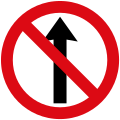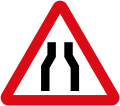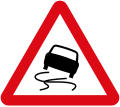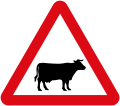TYPES OF VISUAL PERCEPTION
Visual perception is defined as the way one thinks about or understands something using ones senses. It refers to the ability to notice or understand something.
It is an active process of locating and extracting information from the environment aided by visible light. The physiological components involved in visual perception are called as the VISUAL SYSTEM consisting of knowledge from the fields of psychology, cognitive science, neuroscience and molecular biology.
Visual perceptual skills involve the ability to organize and interpret information that is seen and give it meaning
The goal behind designing road signs is to effectively warn road users. The signs should be designed to fulfill the requirements for safety in a given road environment and be visible from a long distance. This depends on:
- Driving speed
- Required viewing time
- Point of disappearance (PoD)
- Number of information elements
- Driver's eyesight (Minute of Arc [MoA])
Minute of Arc is the minimum size of any detail of the provided road sign. It depends on the driver's eye sight.
Other important issues involving visual perception are
- Colour and contrast
- Degree of comprehension of the meaning of designed information
- Conspicuity of the design in the physical environment determined by (Conspicuity Index)
The various types of visual perception are
- Peripheral visual field
- Depth perception
- Colour sensitivity
- Static visual acuity
- Dynamic visual acuity and
- Figure ground discrimination
The above listed types of visual perception find applications in the below mentioned visual below mentioned visual perceptual skills. All of these skills essentially find application in the context of road safety.
Visual Memory allows a person to record, store and retrieve information. It allows learning and recalling later.
Visual Sequential Memory is similar to visual memory as it allows a person to store and retrieve information when necessary.
Visual Form Constancy is a visual skill that allows a person to distinguish one object from another similar object.For example, being able to tell the difference between the letter “b” and “d” or “3” and “8”. It is the ability to see and distinguish these differences is form constancy.
Visual Figure Ground is the visual skill that allows us to distinguish, segregate, isolate or find an object or stimuli in varying environments.
Visual Spatial Relations is the visual skill that allows people to process the visual environment around them and the location of objects in respect to each other.
Visual Closure is the visual skill that allows people to detect, differentiate, select, draw conclusions and understand information when they are only given certain pieces of information, rather than the entire account, story or explanation.
Visual Discrimination – The above six skills require some degree of visual discrimination. Visual Discrimination is the ability to identify detail, seeing similarities and differences items in shape, color, position and orientation.















































































